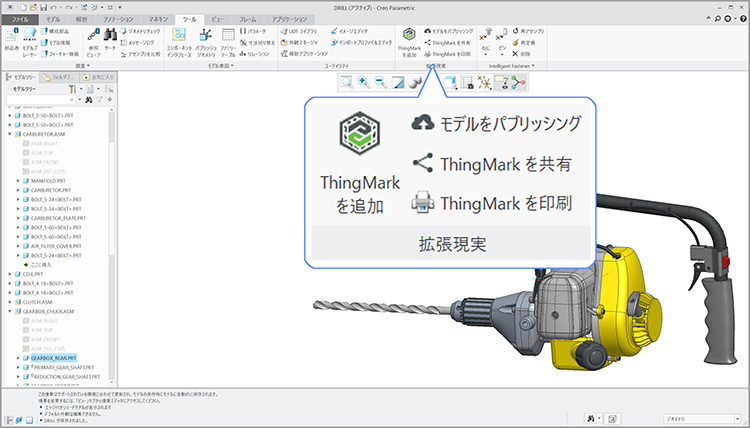



You can use the power of Excel to do some of the heavy lifting for you, and to take advantage of data and calculations that have previously been setup. Using Excel Analysis Features allow you to avoid creating very complicated relations in the model. You may want to use the config.pro option excel_analysis_directory to set a fixed path to your excel analysis spreadsheets. If the spreadsheet can't be found, the model will still regenerate, but will use the last known values. It should be noted that Creo stores the full path to the spreadsheet in the model. In our example, when changes are made to the geometry - say the number of fins or some other geometrical change, the spreadsheet will be loaded, values will be passed from Creo to the spreadsheet, calculations will occur in the spreadsheet, then values will be passed back to the Creo model. Note that the default naming convention is XL_ROW#_COL# but you are of course free to change that to something more meaningful. In the ANALYSIS dialog box, you can create a parameter from the result or results returned to Creo, as shown below: You can use the power of Excel to conduct multiple calculations, then can push the results of those calculations back to Excel to drive the geometry.To do so, in the Excel analysis dialog box, you click Output Cells, then select the cells in Excel where the calculated results are found.įor example, if we were using the spreadsheet to calculate the Total Heat Transfer, you would select cell D65 from the spreadsheet shown below: This process is then repeated until you have extracted all the values you require from the Creo model. The value of THICKNESS in the Creo model will replace the value in the spreadsheet.

Then, select cell B4 in the spreadsheet above. For example, you could select the THICKNESS dimension shown below: In the Excel Analysis dialog box, you click the Add Dimension button and select a dimension from the model, then select the applicable cell. In Creo, you create an Excel Analysis feature. These values can be dimensions or parameters. In this spreadsheet, the cells highlighted in blue are values that come from Creo. Once an Excel spreadsheet is created, it can be easily referenced by multiple models.Ī spreadsheet can be used to drive the geometry based values and calculations in the spreadsheet. This integration is accomplished using an Excel Analysis analysis feature that references an external Excel file to make calculations. The Behavioral Modeling Extension (BMX) enables Excel to be integrated directly into the Creo Parametric 4.0 model so that the model conforms to your design requirements. Microsoft Excel is an application that many companies use to perform calculations for their designs.


 0 kommentar(er)
0 kommentar(er)
